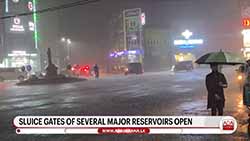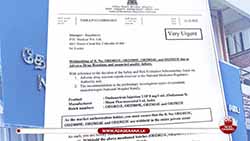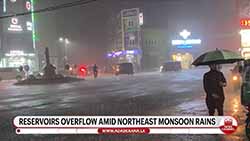North Korea fires second ballistic missile over Japan
September 15, 2017 10:56 am
North Korea has fired a ballistic missile across Japan, its second such move in weeks.
South Korea’s military said the missile reached an estimated altitude of about 770km (478 miles) and travelled 3,700km before landing in the sea off Hokkaido.
Japan’s PM Shinzo Abe said his country would “never tolerate” such “dangerous provocative action”.
“If North Korea continues to walk down this path, it has no bright future,” he said in a statement.
US Secretary of State Rex Tillerson also condemned the launch, which contravened UN sanctions.
He put the burden of response on China and Russia, nuclear-armed North Korea’s main economic partners.
“China supplies North Korea with most of its oil. Russia is the largest employer of North Korean forced labour,” he said.
“China and Russia must indicate their intolerance for these reckless missile launches by taking direct actions of their own.”
Minutes after the launch, South Korea fired two ballistic missiles into the sea in a simulated strike on North Korea, reported Yonhap news agency.
President Moon Jae-in held an emergency meeting of his national security council, and warned that North Korea was facing “diplomatic and economic isolation as much as it increases frequency and strength of reckless provocation”.
The South Korean military said the latest launch - the first since sanctions were tightened this week - took place from the Sunan airfield north of Pyongyang just before 07:00 local time (22:00 GMT on Thursday).
As with the last launch, it flew over Japan’s northern Hokkaido island before splashing down in the Pacific Ocean.
Sirens sounded across the region and text message alerts were sent out warning people to take cover.
According to the initial estimates, the missile flew considerably higher and further than the one fired on 29 August, which Pyongyang had warned was only “the first step” in its military operations in the Pacific.
Observers said it was likely an intermediate range ballistic missile (IRBM), though Japanese officials said there was still a possibility it had been an intercontinental ballistic missile (ICBM).
The US Pacific territory of Guam, which North Korea claims to have plans to fire missiles towards, is 3,400km from Pyongyang, so would be within range of the latest missile.
Pushing the envelope
This test came as a surprise to nobody.
North Korea is steadily proceeding down the path to full ICBM capability. To do that, it needs to test-fire its projectiles - every other missile-armed nation has done the same.
It started this spring by firing its new longer-range Hwasong missiles into the Sea of Japan, then flew one over Hokkaido in August. Next it tested a powerful nuclear device, which it claims it can put on a missile.
Now it has tested another intermediate range missile at longer range and higher altitude.
The next step will almost certainly be a test of the Hwasong-14 ICBM over Japan and far out into the Pacific.
The aim of all this is to develop and deploy a reliable missile that can hit the mainland US.
Japan’s chief cabinet secretary Yoshihide Suga said there had been no reports of damage to aircraft or ships.
The UN Security Council will meet on Friday in New York at the request of Japan and the US.
North Korea, which insists it needs a nuclear and weapons programme to ensure its survival, has repeatedly conducted missiles launches in recent months, disregarding UN sanctions.
It also conducted its sixth nuclear test two weeks ago, which it claimed was a hydrogen bomb, the most powerful weapon ever made.
Fresh UN sanctions were imposed in response targeting the few remaining international trade links North Korea has.
But these appear to have done nothing to stop North Korea’s weapons development, nor its fiery warnings.
On Thursday, it threatened to “sink Japan and turn America to ashes”.
North Korea’s missile programme
- Pyongyang has been developing weapons, initially based on the Soviet-developed Scud, for decades
- Conducted short and medium-range missile tests on many occasions, sometimes to mark domestic events or periods of regional tension
- Pace of tests has increased in recent months; experts say North Korea appears to be making significant advances towards building a reliable long-range nuclear-capable weapon
- On 3 September, North Korea said it tested a hydrogen bomb that could be miniaturised and loaded on a long-range missile
Source: BBC News
-Agencies












